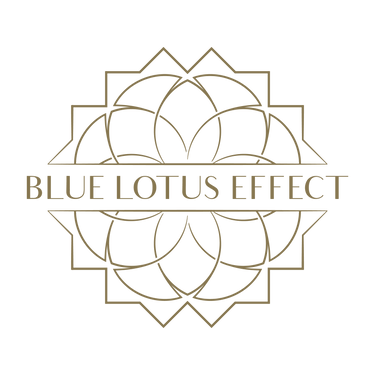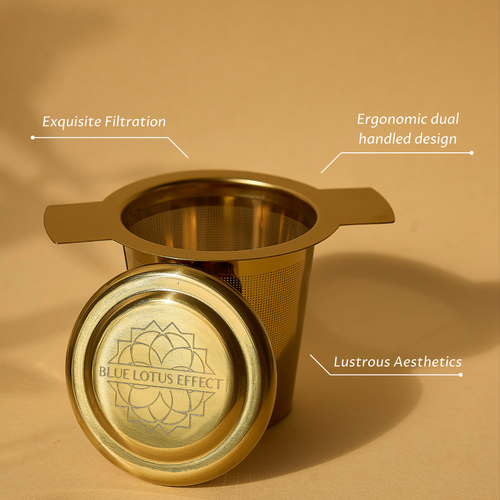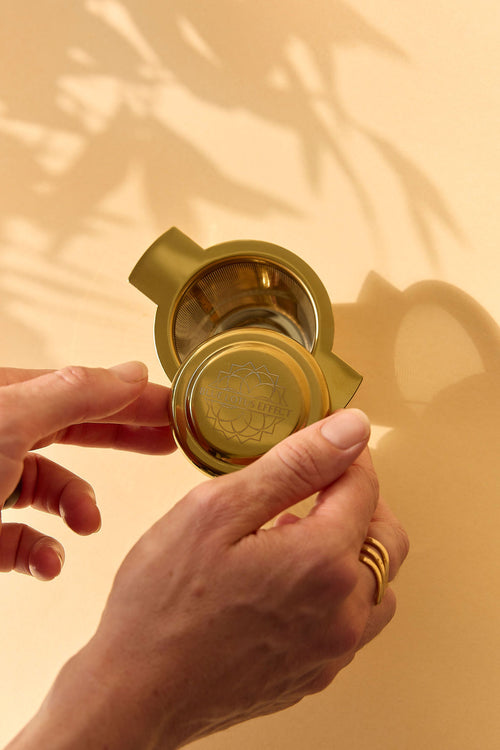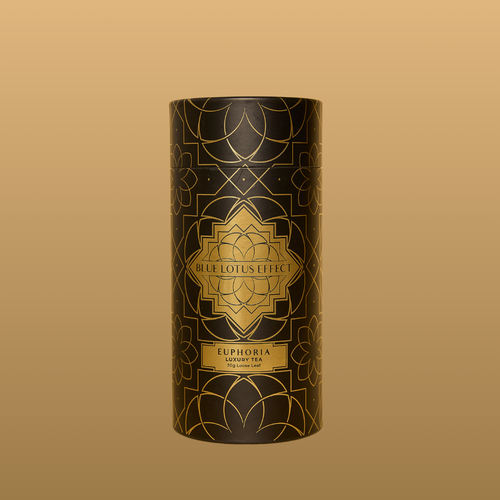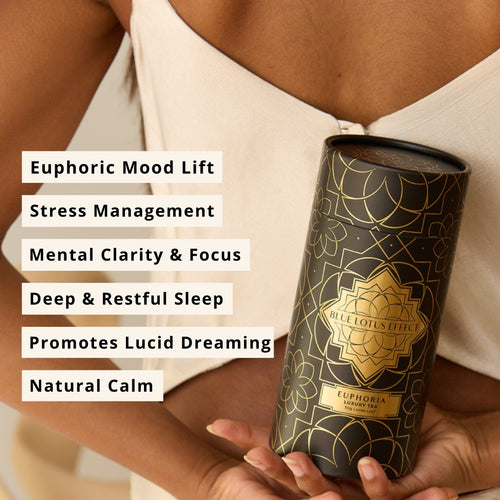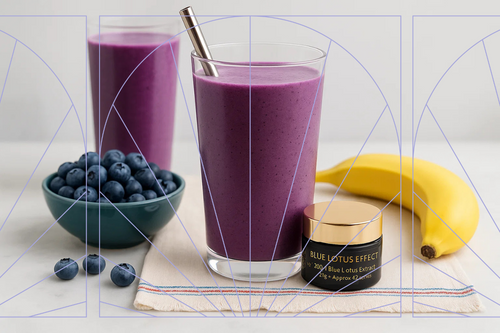Why Blue Lotus, Why Now?
In an age of overstimulation—scrolling, caffeine highs, restless nights—it’s no wonder people are looking back to ancient plant wisdom. And few flowers carry as much mystique as the Blue Lotus (Nymphaea caerulea). Revered by Egyptian pharaohs, priests, and healers, this striking blue water lily tea was more than just a pretty bloom; it was a plant of ceremony, pleasure, and transcendence.
Today, modern seekers are rediscovering its subtle powers. From Blue Lotus tea effects that calm the nervous system, to the concentrated clarity of Blue Lotus tincture, the flower is experiencing a global revival. Searches for buy blue lotus and blue lotus tea Australia are climbing, as more people want natural alternatives to stress relief, sleep aids, and even alcohol.
But what makes this plant so special? And how do you know you’re buying real Blue Lotus flowers—not dusty fakes or weak imitations? In this deep dive, you’ll uncover:
-
The sacred history of Blue Lotus in Egyptian culture.
-
The blue lotus effects backed by modern science.
-
How Blue Lotus tea and tinctures work differently.
-
Why Australians are embracing blue lotus tea Australia as a wellness ritual.
-
Where and how to buy authentic Blue Lotus today.
Ancient Origins: The Sacred Flower of Egypt
Egyptian mythology is filled with Blue Lotus flowers, known as seshen, representing rebirth, divinity, and connection to the gods. The flower opened with the sun each morning and closed at night, symbolising cycles of death and renewal (1).
In temple carvings, gods like Ra (the sun) and Osiris (rebirth) are often depicted with the Blue Lotus. Nefertem, the god of perfumes and healing, was believed to be born from the flower itself, carrying its intoxicating fragrance to soothe both mortals and deities (2).
-
Tomb of Tutankhamun: Blue Lotus petals were found among his wrappings, symbolising eternal life (3).
-
Erotic Papyrus of Turin: Blue Lotus was painted above women’s heads during intimate scenes, reinforcing its link with sensuality and sacred union (4).
-
Banquet Rituals: Egyptians infused wine with Blue Lotus, creating ceremonial brews that induced calm, sociability, and altered awareness (5).
Its sacred role wasn’t limited to Egypt. The Blue Lotus travelled through trade routes, influencing Ayurveda in India and Daoist practices in China, where water lilies were linked to meditation and balance (6).
Blue Lotus Effects: What Modern Users Experience
The fascination continues today because Blue Lotus tea effects aren’t just myth—they’re reported across thousands of blue lotus reviews.
-
Calm & Relaxation: Users describe feeling “soft around the edges,” as if stress naturally dissolves (7).
-
Mood Enhancement: Dopamine support gives a light, heart-opening euphoria without overstimulation (8).
-
Sleep & Dreams: Many drink blue lotus tea at night to promote vivid dreams and deeper sleep (9).
-
Sensuality & Connection: Like the ancients, some find it enhances intimacy, lowering inhibition while deepening presence (10).
-
Meditation & Ceremony: Blue Lotus becomes an anchor, helping quiet the mind and enhance focus during spiritual practice (11).
Compared to stronger herbs, effects blue lotus are gentle. Think of it as a subtle wave rather than a psychedelic trip. That subtlety is its gift—it works with the body, not against it.
Science of Blue Lotus: Alkaloids, Dopamine & Serotonin
The Blue Lotus flower contains two key alkaloids:
-
Apomorphine: A dopamine agonist that lightly stimulates pleasure and motivation receptors, once used in clinical settings for mood disorders (12).
-
Nuciferine: A mild sedative, promoting relaxation and reducing anxiety through serotonin receptor interactions (13).
Recent research shows Blue Lotus also contains flavonoids and antioxidants that support circulation and neuroprotection (14).
Why does this matter? Because modern life often disrupts dopamine and serotonin balance, leaving people anxious, restless, or unmotivated. Blue Lotus offers a gentle recalibration, supporting neurotransmitters naturally.
Yet, science is still catching up. While anecdotes abound, more human studies are needed. Still, centuries of ritual use and modern experiential reports suggest there’s something profound in this flower (15).
The Australian Revival: Blue Lotus Tea in Modern Ritual
In Australia, demand for Blue Lotus tea and tinctures has soared. Typing buy blue lotus or blue lotus tea Australia now returns dozens of results. Why?
-
Legal & Accessible: Blue Lotus is legal to buy in Australia, often sold as “not for human consumption” due to regulatory wording, but widely embraced ceremonially (16).
-
Alcohol Alternative: Many are swapping wine for blue lotus tea effects at night, finding it relaxing without hangovers (17).
-
Wellness Trend: As anxiety and sleep struggles rise, so does the search for natural remedies—making Blue Lotus a gentle, accessible option (18).
Communities from Byron Bay to Melbourne now host blue lotus ceremonies, mirroring the sacred Egyptian use, but updated for modern wellness seekers.
Tea, Tincture, or Flowers: What’s Best?
When it comes to using Blue Lotus, form matters.
Blue Lotus Tea
-
Steep 2–3 g dried blue lotus flowers in 85°C water for 10–15 mins.
-
Effects: relaxing, dream-enhancing, grounding.
-
Best for evening rituals.
👉 Try it here: Blue Lotus Tea – Ceremonial Grade Whole Flowers
Blue Lotus Tincture
-
1–2 droppers under the tongue (sublingually).
-
Effects: faster onset, more concentrated.
-
Best for on-the-go calm or meditations.
👉 Explore: Blue Lotus Euphoria Tincture
Whole Flowers (Ceremonial)
-
Used in infusions, baths, or visual altar adornment.
-
Effects: adds beauty and depth to ritual.
Spotting Fake or Weak Blue Lotus
Not all lotus products are equal. Many “blue lotus” teas online are actually Nymphaea nouchali or Nelumbo nucifera—different species with little to no active alkaloids (19).
Red flags include:
-
Brown, dusty petals (old stock).
-
No botanical name listed.
-
No sourcing transparency.
-
Suspiciously cheap bulk prices.
When reading blue lotus reviews, you’ll notice big variation—often because buyers unknowingly purchased poor-quality substitutes (20).
Why People Buy Blue Lotus Today: Reviews & Rituals
Across thousands of blue lotus reviews, recurring themes appear:
-
“The dreams are wild—so vivid I can remember them in the morning.”
-
“It feels like a glass of wine, but lighter, calmer, and without the hangover.”
-
“I finally sleep through the night.”
-
“My meditation feels deeper, like my mind quiets faster.”
These aren’t just placebo—they echo what Egyptians inscribed in papyrus thousands of years ago: that blue lotus flower effects were sacred, sensual, and transformative (21).
Quick Takeaways
-
Buy Blue Lotus only from trusted sources—look for Nymphaea caerulea.
-
Blue Lotus tea effects are subtle yet powerful—calm, mood lift, dream support.
-
Blue Lotus tincture offers faster onset for meditation and ceremony.
-
Australians are embracing blue lotus tea Australia as a wellness ritual and alcohol alternative.
-
Reviews confirm it enhances sleep, mood, and inner connection.
Conclusion: Reclaiming Ritual in a Chaotic World
The ancients understood something we’re just beginning to remember: healing doesn’t always come from a pill, but from plants, presence, and ritual. Blue Lotus, once reserved for pharaohs and gods, now blooms again in mugs and tincture bottles across Australia.
If you’re ready to explore the calming, dream-enhancing, heart-opening power of this sacred flower, start with quality:
👉 Buy Blue Lotus Tea – Ceremonial Grade Whole Flowers
👉 Try Blue Lotus Euphoria Tincture
One sip, one drop, one ritual at a time—you’ll see why the world is falling back in love with the Blue Lotus.
FAQs
1. What are the main blue lotus tea effects?
Calm, mood enhancement, vivid dreams, and gentle euphoria. It does not cause hallucinations like psychedelics (12).
2. Is Blue Lotus legal in Australia?
Yes. It can be sold as a ceremonial or aromatic herb, making it safe to buy online in Australia (16).
3. Can Blue Lotus help with anxiety?
Many reviews suggest it supports relaxation and relieves tension. Its alkaloids interact with dopamine and serotonin receptors, easing nervous system overactivity (13).
4. Is Blue Lotus tea safe for daily use?
Moderate daily use is generally safe. Begin with small amounts—2–3 g of tea or 1 dropper of tincture—and see how your body responds (17).
5. Where is the best place to buy blue lotus?
From verified suppliers who offer Nymphaea caerulea with clear sourcing. We recommend Blue Lotus Effect for authentic tea and tincture.
References
-
Pinch, G. (2004). Egyptian Mythology. Oxford University Press.
-
Manniche, L. (1989). An Ancient Egyptian Herbal. University of Texas Press.
-
Ikram, S. (2015). Death and Burial in Ancient Egypt. AUC Press.
-
Baines, J. (1985). Fecundity Figures: Egyptian Erotic Art. Griffith Institute.
-
Real Royalty. (2023). The Narcotic Flower That Seduced Ancient Egypt’s Royals.
-
Doniger, W. (1999). The Laws of Manu. Penguin Classics.
-
Blue Lotus Effect Reviews (2025). Internal customer feedback.
-
Rupa Health (2025). The Power of Blue Lotus.
-
Reddit /r/LucidDreaming (2025). User experiences.
-
Grounded Cup Blog (2025). Is Blue Lotus Legal in Australia?
-
Yoga Journal (2025). Ancient Herbs Revived by TikTok.
-
Yu, X. et al. (2023). Journal of Ethnopharmacology.
-
Berkeley News (2025). Investigating the Psychedelic Blue Lotus.
-
Healthline (2025). Blue Lotus Benefits and Effects.
-
Lee, C. (2021). Journal of Herbal Studies, 18(4), 102–117.
-
TGA Australia (2024). Herbal Product Guidelines.
-
Blue Lotus Effect Blog (2025). Why Blue Lotus Might Not Be Working for You.
-
Global Wellness Report (2024). Herbal Market Trends.
-
Product Testing Report (2025). Hidden Fakes in “Blue Lotus”.
-
Consumer Reports (2024). Evaluating Herbal Quality.
-
Harris, M. (2019). Botanical Aphrodisiacs: A Historical Perspective. Oxford University Press.
